Lidl 160 LED Hobby lamp.
Posted by Marcel van der Steen in Led lights, Light measurements 1 Comment» Lidl presents a LED based hoby lamp with 160 leds. The brand is Powerfix Profi. The leds emit a very bright white light and the beam is very small. The price paid by OliNo was 30 euro. It has a 5 m long power cable.
Lidl presents a LED based hoby lamp with 160 leds. The brand is Powerfix Profi. The leds emit a very bright white light and the beam is very small. The price paid by OliNo was 30 euro. It has a 5 m long power cable.
This article shows the measurement results. Many parameters are also found in the Eulumdat file.
See this overview for a comparison with other light bulbs.
Summary measurement data
| parameter | meas. result | remark |
|---|---|---|
| Color temperature | 11553 K | Very bright/cool white |
| Luminous intensity Iv | 1209 Cd | Measured straight underneath the lamp |
| Illuminance modulation index | 15 % | Measured straight underneath the lamp. Is a measure for the amount of flickering. |
| Beam angle | 19 deg | 19º for the C0-C180 plane (here in the direction of the width of the lamp) and 18º for the C90-C270 plane (here in the direction of the height of the lamp). This is virtually the same value. |
| Power P | 7.6 W | |
| Power Factor | 0.35 | For every 1 kWh net power consumed, there has been 2.7 kVAhr for reactive power. |
| THD | 48 % | Total Harmonic Distortion |
| Luminous flux | 294 Lm | |
| Luminous efficacy | 39 Lm/W | |
| CRI_Ra | 84 | Color Rendering Index. |
| Coordinates chromaticity diagram | x=0.2752 and y=0.2773 | |
| Fitting | 230V | This lamp is connected directly to the grid voltage of 230 V AC. |
| PAR-value | 13.1 μMol/s/m2 | The number of photons seen by an average plant when it is lit by the light of this light bulb. Value valid at 1 m distance from light bulb. |
| PAR-photon efficacy | 0.4 μMol/s/We | The toal emitted number of photons by this light, divided by its consumption in W. It indicates a kind of efficacy in generating photons. |
| S/P ratio | 2.7 | This factor indicates the amount of times more efficient the light of this light bulb is perceived under scotopic circumstances (ow environmental light level). |
| L x W x H external dimensions | 220 x 180 x 120 mm | External dimensions of the lamp, only the box in which the leds are mounted is considered (without the tubes/frame). |
| L x W luminous area | 190 x 140 mm | Dimensions of the luminous area (used in Eulumdat file). This is equal to the surface pf the printed circuit board on which the leds are mounted. |
| General remarks | The ambient temperature during the whole set of measurements was 23.5-25 deg C. The temperature of the lamp gets about 13 degrees hotter than ambient and this point is on the transparent cover. The side of the housing of the box only gets 6 degrees warmer than ambient.
Warm up effect: during the warm up time neither the illuminance nor the consumed power vary significantly. Voltage dependency: the power consumption and illuminance do vary linearly when the voltage is varied from 200 – 250 V. At the end there are some additional photos of the lamp. |
|
| Measurement report (PDF) | n.a. | |
| Eulumdat file |  |
Right click on icon and save the file. |
| IES file |  |
Right click on icon and save the file. |
Overview table
The overview table is explained on the OliNo website.
Please note that this overview table makes use of calculations, use this data with care as explained on the OliNo site. E (lux) values are not accurate, when within 5 x 236 mm ≈ 1200 mm. Within this distance from the lamp, the measured lux values willl be less than the computed values in this overview as the measurements are then within the near field of the lamp.
Eulumdat light diagram
This light diagram below comes from the program Qlumedit, that extracts these diagrams from an Eulumdat file. It is explained on the OliNo site.
The light diagram giving the radiation pattern.
It indicates the luminous intensity around the light bulb. The direction or plane C90-C270 (along the height direction of the lamp) has the same radiation pattern as the C0-C180 (along the width direction of he lamp).
Illuminance Ev at 1 m distance, or luminous intensity Iv
Herewith the plot of the averaged luminous intensity Iv as a function of the inclination angle with the light bulb.
The radiation pattern of the light bulb.
This radiation pattern is the average of the light output of the light diagram given earlier. Also, in this graph the luminous intensity is given in Cd. These averaged values are used (later) to compute the lumen output.
Intensity data of every measured turn angle at each inclination angle.
This plot shows per inclination angle the intensity measurement results for each turn angle at that inclination angle. There normally are differences in illuminance values for different turn angles. However for further calculations the averaged values will be used. When using the average values per inclination angle, the beam angle can be computed, being 18-19º depending on the plane looked at (resp. the C0-C180 plane and the C90-C270 plane).
Luminous flux
With the averaged illuminance data at 1 m distance, taken from the graph showing the averaged radiation pattern, it is possible to compute the luminous flux. The result of this computation for this light spot is a luminous flux of 294 Lm.
Luminous efficacy
The luminous flux being 294 Lm, and the power of the light bulb being 7.6 W, yields a luminous efficacy of 39 Lm/W.
Electrical properties
A power factor of 0.35 means that for every 1 kWh net power consumed, a reactive component of 2.7 kVAr was needed.
| Lamp voltage | 230 VAC |
| Lamp current | 96 mA |
| Power P | 7.6 W |
| Apparent power S | 22.0 VA |
| Power factor | 0.35 |
Of this light bulb the voltage across ad the resulting current through it are measured and graphed. See the OliNo site how this is obtained.
Voltage across and current through the lightbulb
This waveforms have been checked on requirements posed by the norm IEC 61000-3-2:2006 (including up to A2:2009). See also the explanation on the OliNo website.
Harmonics in in the current waveform and checked against IEC61000-3-2:2006
There are no limits for the harmonics for lighting equipment <= 25 W.
The Total Harmonic Distortion of the current is computed as 48 %.
Temperature measurements lamp
Temperature image of the box in which the leds are housed
| status lamp | > 2 hours on |
| ambient temperature | 24 deg C |
| reflected background temperature | 24 deg C |
| camera | Flir BCAM |
| emissivity | 0.95(1) |
| measurement distance | 0.30 m |
| IFOVgeometric | 1.1 mm |
| NETD (thermal sensitivity) | 100 mK |
(1) The emissivity is set at 0.95 which is the value for a diffuse and non-reflecting material such as the housing of the leds.
The hottest temperature oof the cover is warm-to-the-touch.
Color temperature and Spectral power distribution
The spectral power distribution of this light bulb, energies on y-axis valid at 1 m distance.
The measured color temperature is about 11550 K which is very bright/cool white.
This color temperature is measured straight underneath the light bulb. Below a graph showing the color temperature for different inclination angles.
Color temperature as a function of inclination angle.
The measurement of CCT is measured for inclination angles up to 75º as beyond that angle the illuminance values are very low (< 5 lux).
The beam angle is maximally 19º, meaning a 9.5º inclination angle. In this area most of the light is present. The variation in correlated color temperature in this area is about 4 %.
PAR value and PAR spectrum
To make a statement how well the light of this light bulb is for growing plants, the PAR-area needs to be determined. See the OliNo website how this all is determined and the explanation of the graph.
The photon spectrum, then the sensitivity curve and as result the final PAR spectrum of the light of this light bulb
| parameter | value | unit |
|---|---|---|
| PAR-number | 13.1 | μMol/s/m² |
| PAR-photon current | 3.1 | μMol/s |
| PAR-photon efficacy | 0.4 | μMol/s/W |
The PAR efficiency is 69 % (valid for the PAR wave length range of 400 – 700 nm). So maximally 69 % of the total of photons in the light is effectively used by the average plant (since the plant might not take 100 % of the photons at the frequency where its relative sensitivity is 100 %).
S/P ratio
The S/P ratio and measurement is explained on the OliNo website. Here the results are given.
The power spectrum, sensitivity curves and resulting scotopic and photopic spectra (spectra energy content defined at 1 m distance).
The S/P ratio is 2.7.
More info on S/P ratio can be found on the OliNo website.
Chromaticity diagram
The chromaticity space and the position of the lamp’s color coordinates in it.
The light coming from this lamp is outside the area designated with class A. This Class A is an area that is defined for signal lamps, see also the OliNo website. The color point is situated outside, towards the blue hues.
Its coordinates are x=0.2752 and y=0.2773.
Color Rendering Index (CRI) or also Ra
Herewith the image showing the CRI as well as how well different colors are represented (rendered). The higher the number, the better the resemblance with the color when a black body radiator would have been used (the sun, or an incandescent lamp). Practical information and also some critics about the CRI can be found on the OliNo website. Each color has an index Rx, and the first 8 indexes (R1 .. R8) are averaged to compute the Ra which is equivalent to the CRI.
CRI of the light of this lightbulb.
The value of 84 is higher than 80 which is considered a minimum value for indoor usage.
Note: the chromaticity difference is 0.0057 indicates the distance to the Planckian Locus. There is no norm yet that states what the max deviation from white light is allowed to be. A reference with signal lights as a reference is given in the chromaticity diagram.
Voltage dependency
The dependency of a number of lamp parameters on the lamp voltage is determined. For this, the lamp voltage has been varied and its effect on the following light bulb parameters measured: illuminance E_v [lx], the lamppower P [W] and the luminous efficacy [Lm/W].
Lamp voltage dependencies of certain light bulb parameters, where the value at 230 V is taken as 100 %.
The illuminance and consumed power do not vary significantly when the voltage is varied.
When the voltage at 230 V varies with + and – 5 V, then the illuminance varies ≈ 2.5 %, so when abrupt voltage changes occur this effect is not visible in the illuminance output.
Warm up effects
After switch on of a cold lamp, the effect of heating up of the lamp is measured on illuminance E_v [lx], the lamppower P [W] and the luminous efficacy [lm/W].
Effect of warming up on different light bulb parameters. At top the 100 % level is put at begin, and at bottom at the end.
The warm up time is not relevant as the illuminance and the consmed power vary insignificantly (less than 5 %).
Measure of flickering
An analysis is done on the measure of flickering of the light output by this light bulb.
The measure of fast illuminance variartion of the light of the light bulb
| parameter | waarde | eenheid |
|---|---|---|
| Flicker frequency | 100.0 | Hz |
| Illuminance modulation index | 16 | % |
The illuminance modulation index is computed as: (max_Ev – min_Ev) / (max_Ev + min_Ev).
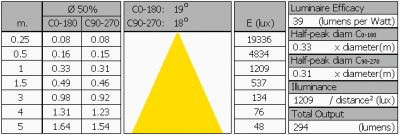
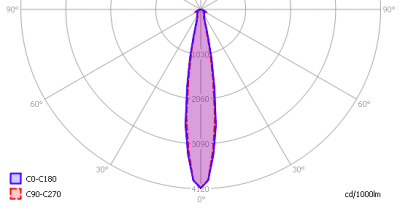
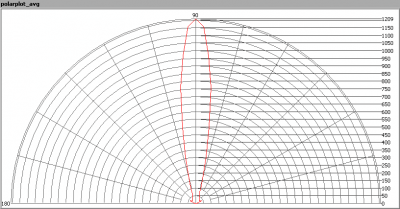
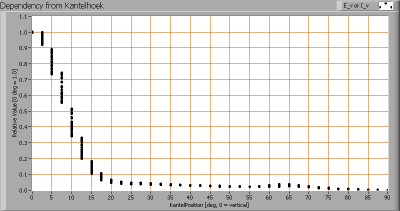
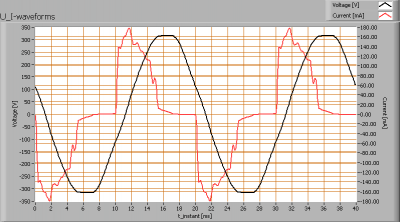
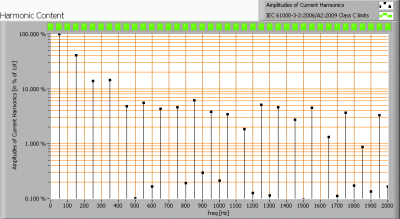
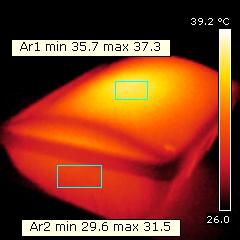
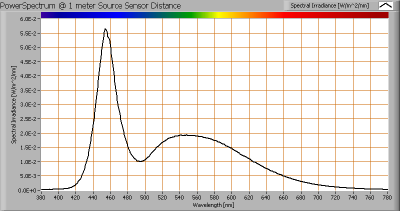
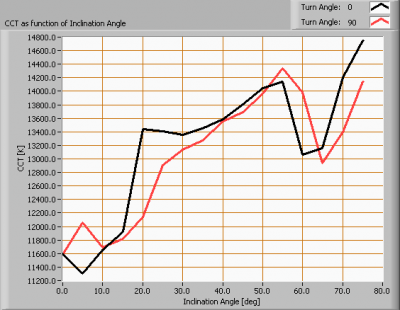
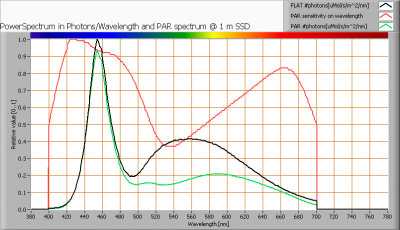
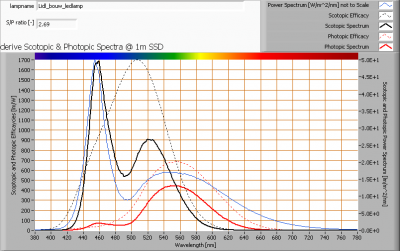
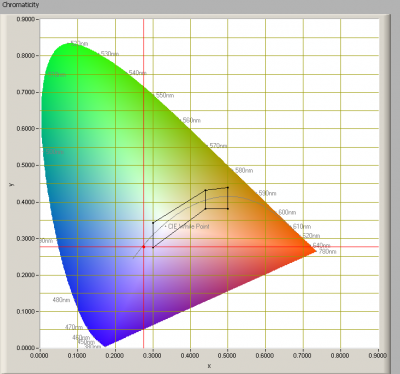
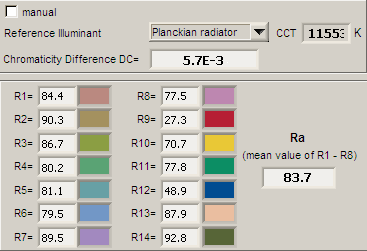
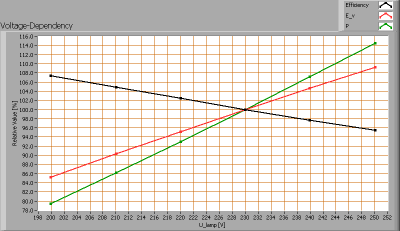
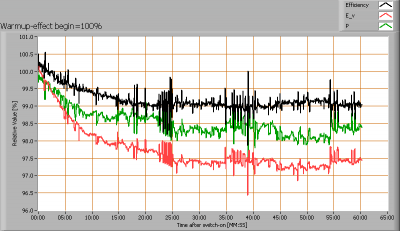
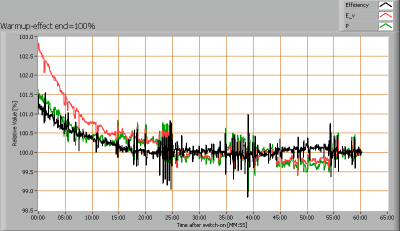
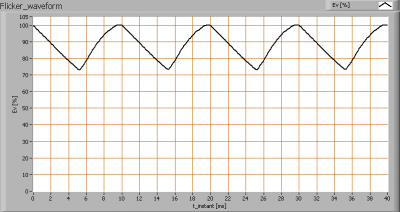
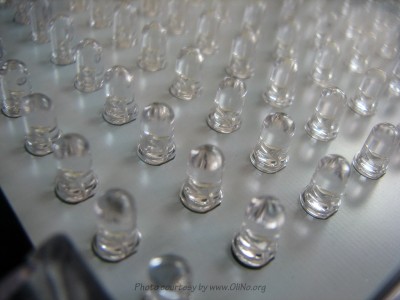
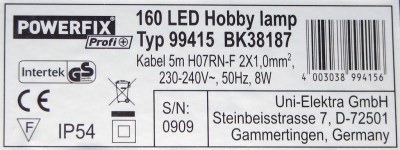





1 reply on “Lidl 160 LED Hobby lamp.”
Dear Sir,
Could you please forward your most competitive price for 30 nr. Powwerfix Profi 160 LED Hobby Floodlight Typ 99415 BK38187. Many thanks.
Kind regards,
Fionnuala
Ph: 00 353 53 94 21599